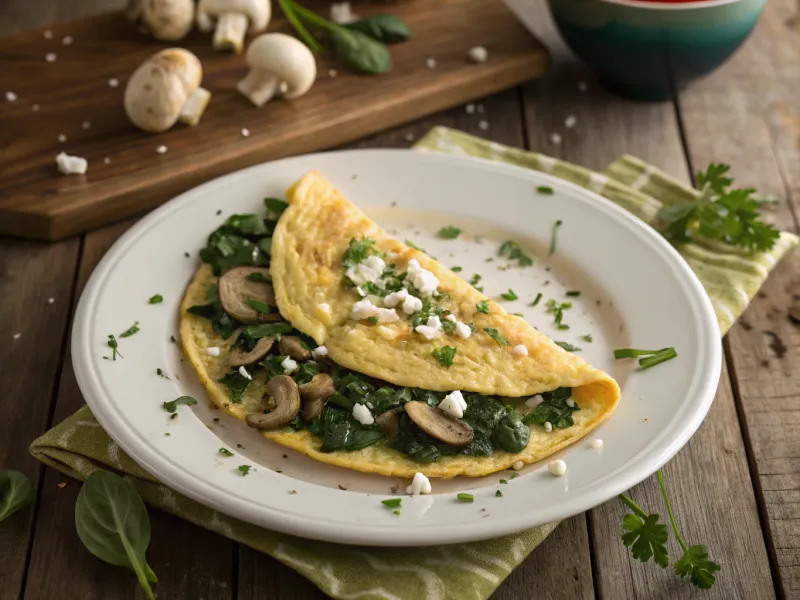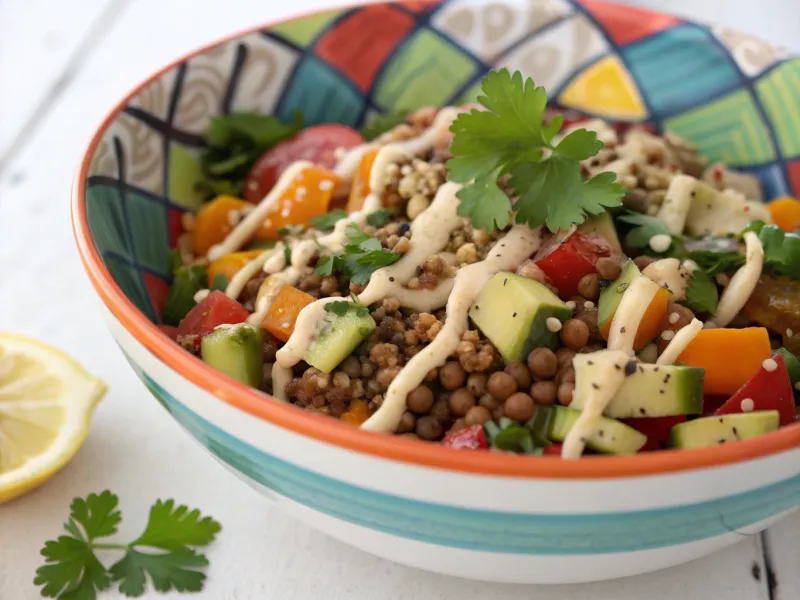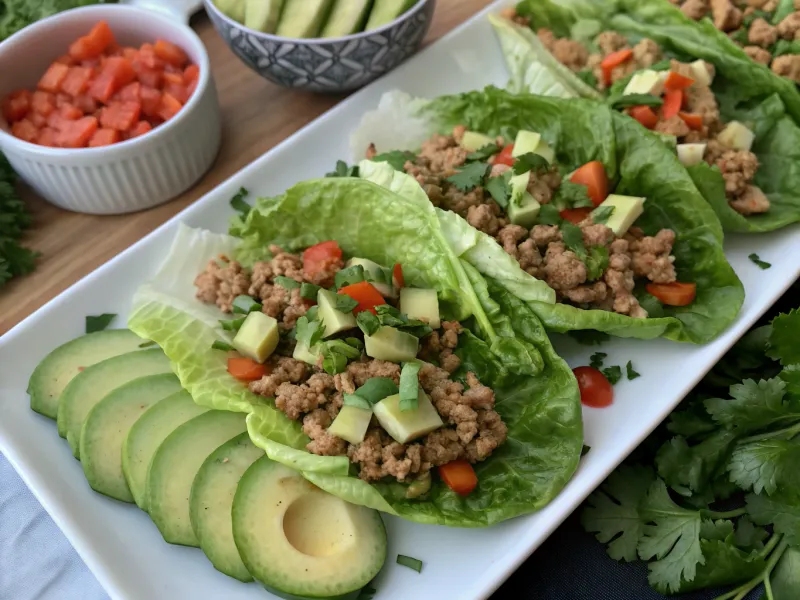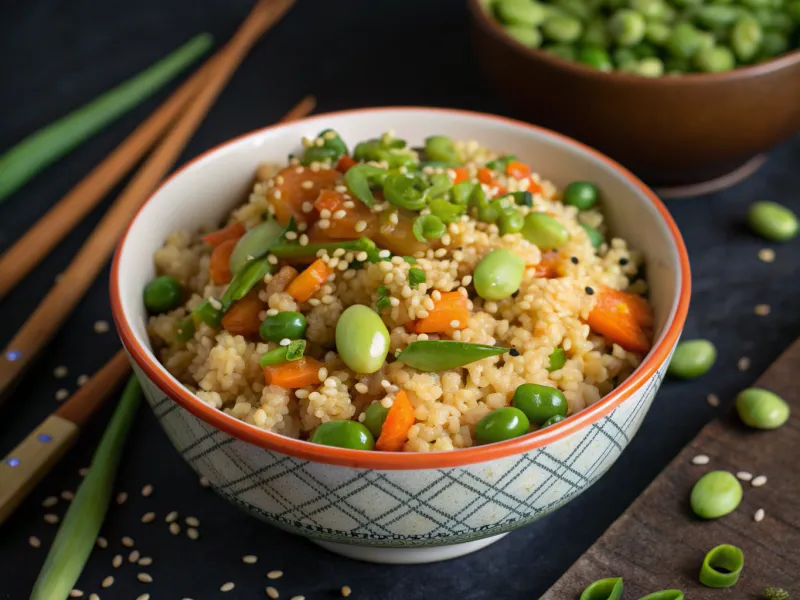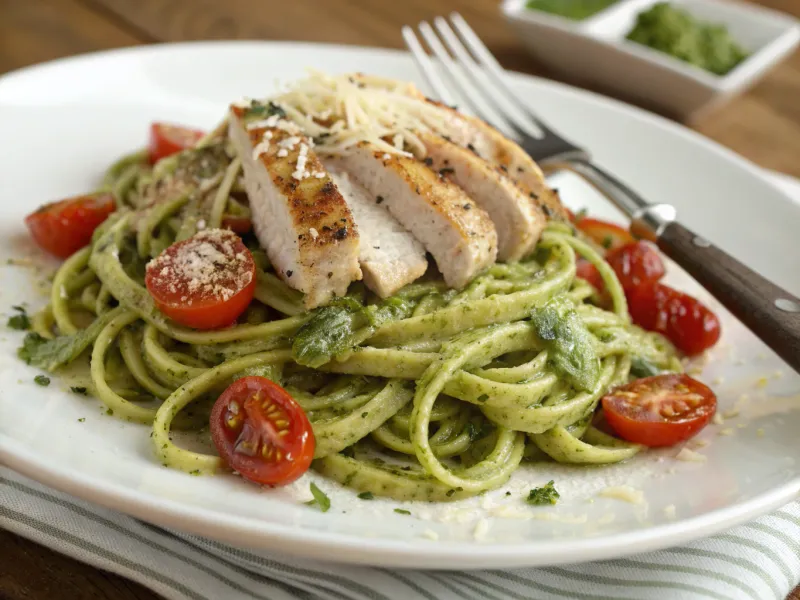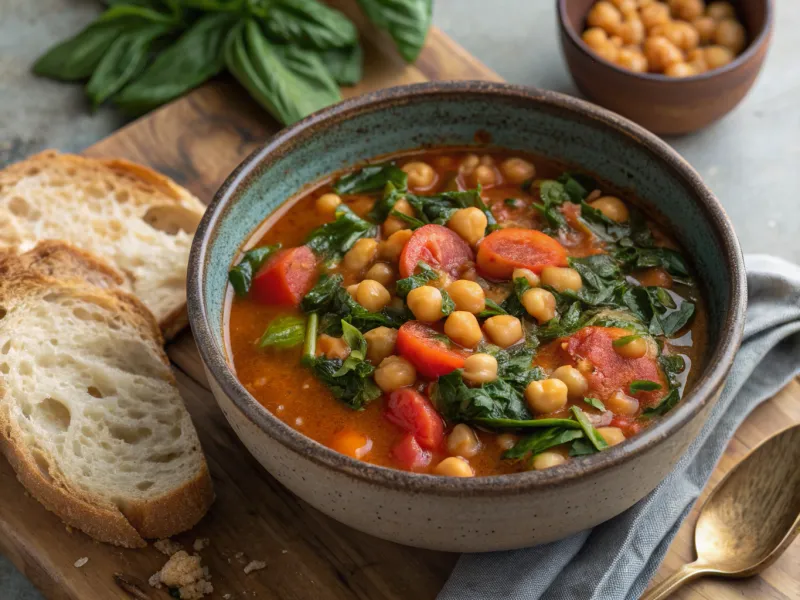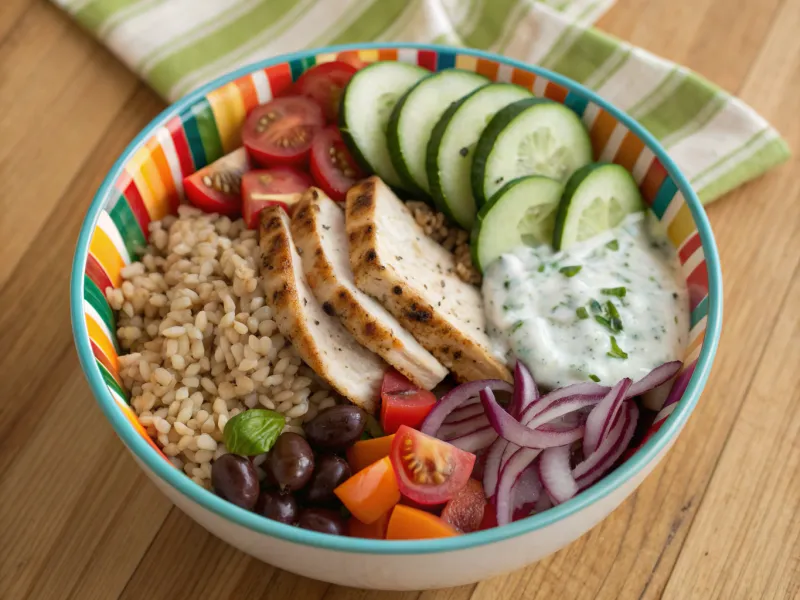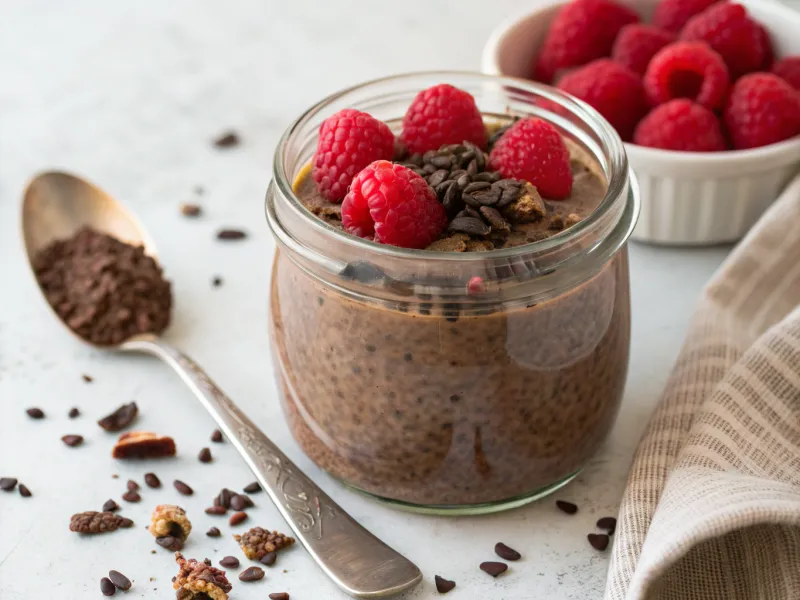After 50, your body processes sugar differently. Insulin sensitivity decreases, making blood sugar spikes more common after meals. But eating well doesn’t mean giving up flavor or satisfaction—it just means choosing smarter ingredients that keep your glucose steady and your energy balanced throughout the day.
1. Greek Yogurt Breakfast Parfait with Berries and Chia Seeds
Starting your morning with protein makes all the difference. Greek yogurt delivers nearly double the protein of regular yogurt, which slows down how quickly your body absorbs sugar.
Chia seeds add soluble fiber that turns gel-like in your stomach, further delaying digestion. Fresh berries bring natural sweetness and antioxidants without causing the glucose rollercoaster that pastries or sugary cereals trigger.
Layer everything in a glass, and you’ve got a breakfast that tastes indulgent but keeps your blood sugar calm and your energy steady until lunch.
2. Veggie Omelet with Spinach, Mushrooms, and Feta
Eggs rank incredibly low on the glycemic index, meaning they won’t raise your blood sugar at all. Packed with high-quality protein, they keep you satisfied for hours.
Adding spinach and mushrooms boosts fiber content, which helps regulate glucose absorption. Feta cheese brings a salty, tangy kick without extra carbs.
This omelet works for breakfast, lunch, or even a light dinner. It’s quick to whip up, endlessly customizable with whatever veggies you have on hand, and delivers serious staying power without weighing you down or spiking your levels.
3. Lentil and Quinoa Salad with Lemon-Tahini Dressing
Both lentils and quinoa have a low glycemic load, which means they release energy slowly instead of flooding your bloodstream with sugar. They’re also loaded with plant-based protein and fiber.
The lemon-tahini dressing adds healthy fats from sesame seeds, which further slows digestion and keeps glucose stable. It’s tangy, creamy, and completely sugar-free.
Make a big batch on Sunday and portion it out for easy lunches all week. This salad tastes even better the next day as the flavors meld together, making meal prep a breeze.
4. Grilled Salmon with Roasted Brussels Sprouts
Salmon is rich in omega-3 fatty acids, which research shows can improve insulin sensitivity over time. That means your cells respond better to insulin, keeping blood sugar more stable.
Brussels sprouts are cruciferous vegetables packed with fiber and nutrients that support metabolic health. Roasting them brings out their natural sweetness and crispy edges.
This dinner feels fancy enough for guests but takes less than 30 minutes to prepare. Pair it with a squeeze of fresh lemon, and you’ve got a meal that nourishes your body while keeping glucose levels perfectly balanced.
5. Turkey and Veggie Lettuce Wraps
Ditch the tortillas and carb-heavy wraps—lettuce leaves provide the perfect crunchy vessel without any blood sugar impact. Lean turkey is high in protein and low in fat, keeping you full without the glucose spike.
Avocado adds creamy texture and heart-healthy fats that slow digestion. Fresh herbs like cilantro and mint bring brightness and flavor without any added sugars or calories.
These wraps feel fun and interactive, almost like eating tacos. They’re perfect for a quick lunch or casual dinner, and you can customize the fillings based on your mood or what’s in your fridge.
6. Cauliflower Fried Rice with Edamame
Craving takeout but want to keep your blood sugar in check? Cauliflower rice is your answer. It mimics the texture of regular rice but contains a fraction of the carbs.
Edamame adds plant-based protein and fiber, turning this side dish into a complete meal. The combination keeps you satisfied without the post-meal crash that comes from white rice.
Season it with garlic, ginger, and a splash of low-sodium soy sauce for authentic flavor. You can make a big batch and reheat it throughout the week for quick, blood sugar–friendly meals that taste like your favorite restaurant.
7. Zucchini Noodles with Pesto and Grilled Chicken
Zucchini noodles deliver that satisfying twirl-on-your-fork experience without the blood sugar spike that comes from traditional pasta.
Pesto made with basil, olive oil, and pine nuts provides healthy fats that slow digestion and keep glucose levels stable. Grilled chicken adds lean protein for staying power.
This meal is light yet filling, fresh yet flavorful. It comes together in about 15 minutes, making it perfect for busy weeknights when you need something quick but don’t want to compromise on taste or your health goals. Plus, it’s naturally gluten-free.
8. Chickpea and Spinach Stew
Comfort food doesn’t have to spike your blood sugar. Chickpeas are legumes loaded with fiber and plant protein, both of which help stabilize glucose levels after eating.
Spinach adds iron, vitamins, and more fiber to this Mediterranean-inspired dish. Simmered with tomatoes, garlic, and warming spices, it becomes a cozy meal that satisfies your soul.
Make a big pot on Sunday and enjoy it all week. The flavors deepen over time, and it reheats beautifully.
9. Greek Chicken Bowl with Brown Rice and Tzatziki
Brown rice digests much more slowly than white rice, thanks to its intact bran layer that’s full of fiber. This keeps your blood sugar from spiking after meals.
Grilled chicken provides lean protein, while tzatziki—a yogurt-based sauce—adds probiotics that support gut health and may improve insulin sensitivity. Fresh veggies like cucumbers, tomatoes, and olives round out the bowl with crunch and flavor.
This bowl is endlessly adaptable. Swap the chicken for falafel, change up the veggies, or add a sprinkle of feta. It’s hearty, balanced, and keeps your glucose steady for hours after eating.
10. Dark Chocolate Chia Pudding
Yes, you can have dessert and keep your blood sugar stable. Chia seeds expand in liquid to create a pudding-like texture that’s loaded with fiber and omega-3 fatty acids.
Unsweetened cocoa powder delivers rich chocolate flavor without any added sugar. Sweeten it lightly with stevia or a touch of maple syrup if needed, and top with fresh berries for natural sweetness.
This dessert actually helps slow digestion, meaning it won’t cause the spike-and-crash cycle that traditional sweets do. Make it the night before, and you’ll have a ready-to-eat treat waiting in your fridge whenever a craving hits.


